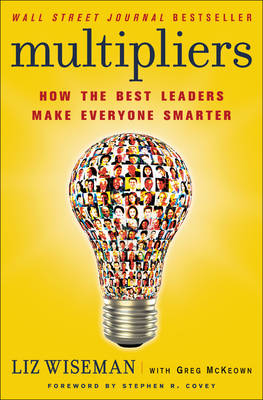
Elizabeth Wiseman spent 17 years at Oracle working as a vice president alongside incredibly intelligent executives, affording her an inside perch from which she could observe how they used their individual capabilities in very different ways. Some leaders needed to be the smartest person in the room so they frequently overshadowed colleagues, killed ideas, and destroyed energy. Others used their intelligence to amplify the creativity and capabilities of the people around them - to help make everyone a genius. Witnessing this fascinating pattern, Wiseman and Greg McKeown launched a research project that involved interviews with more than 100 executives and their employees to uncover the differences between these two distinctive styles of leadership - what they call the Diminishers and the Multipliers.
Using insightful, real-life examples, "Multipliers" defines and contrasts each style and lays out five key disciplines that can help managers avoid the Diminisher trap and become Multipliers: Create the Work Climate - Be The Teacher not The Tyrant; Set Direction - Be The Challenger not The Director; Manage Talent - Be The Talent Scout not The Empire Builder; Make Decisions - Be The Debate Maker not The Decision Maker; and, Deliver Results - Be The Teacher not The Micromanager. By applying these disciplines, current and aspiring managers will learn how to think and operate like Multipliers, and, in doing so, create genius everywhere, make employees smarter and more capable, and drive their teams to extraordinary performance.
How do you deal with coworkers who bring you down? Do you try to "fix" them? Try to work better with them? What if their actions prevent you from being the productive team member you want to be?
This is the idea Liz poses between "Deminisher" and "Multipliers". Multipliers have the ability to make everyone around them better. Deminishers, on the other hand, hinder other peoples abilities to work.
While many of the examples are presented over and over again (which got somewhat monotonous), a few stuck with me. Working with others when you already have a plan in mind can make for an unhappy relationship. The constant reminder in this book to seek context with others and solve their problems first was a leadership takeaway that I could stand to do a better job at.
Reading updates
-
Started reading
-
22 January, 2018:
Finished reading
-
22 January, 2018:
Reviewed
